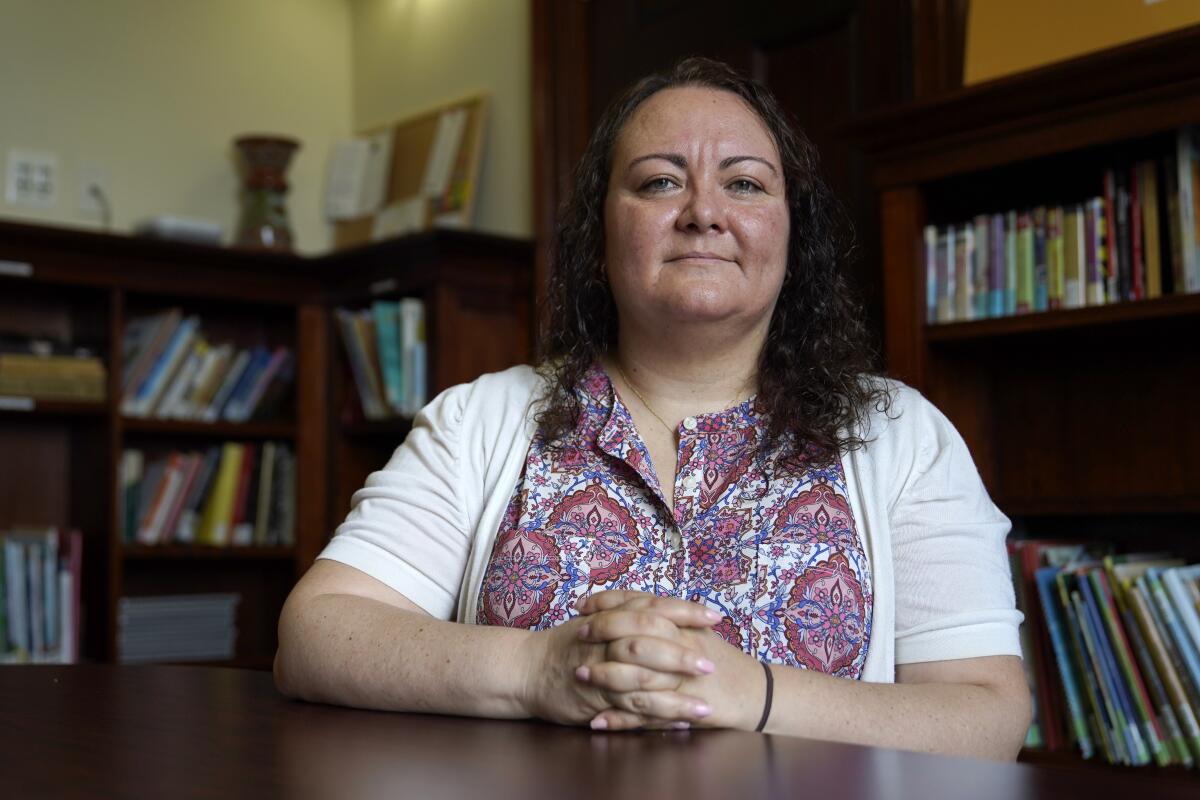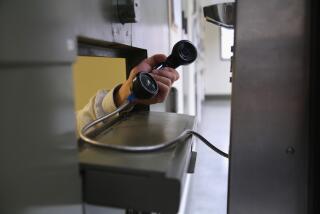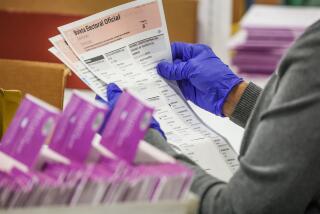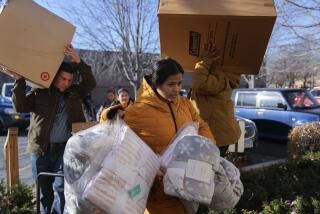Fear, language barriers hinder coronavirus contact tracing in immigrant communities

- Share via
Only a handful of contact tracers working to slow the spread of COVID-19 in 125 communities near Chicago speak Spanish, despite significant Spanish-speaking populations. Churches and advocacy groups in the Houston area are trying to convince immigrants to cooperate when health officials call. And in California, immigrants are being trained as contact tracers to ease mistrust.
The crucial job of reaching people who test positive for the coronavirus and those they’ve come in contact with is proving especially difficult in immigrant communities because of language barriers, confusion and fear of the government.
The failure of health departments across the U.S. to adequately investigate coronavirus outbreaks among non-English speakers is all the more fraught given the soaring and disproportionate case counts among Latinos in many states. Four of the hardest hit states -- Florida, Texas, Arizona and California -- have major Spanish-speaking populations.
In the ZIP Code with the highest number of COVID-19 cases in Maryland, 56% of adults speak Spanish. But only 60 of Maryland’s 1,350 contact tracers speak Spanish.
And the language barriers go beyond Spanish: Minneapolis needs tracers who also speak Somali, Oromo and Hmong; Chicago needs Polish speakers; and Houston’s tracing effort is grappling with a population that includes Vietnamese, Chinese and Hindi speakers.
But even when health officials overcome language barriers, they still must dispel the deep suspicions raised among immigrants when someone with the government calls to ask about their movements in an era of hard-line immigration enforcement under President Trump.
“It should come as no surprise that people may be afraid to answer the phone,” said Dr. Kiran Joshi, senior medical officer at the Cook County Department of Public Health, which serves 2.4 million people in communities just outside Chicago.
Exacerbating the challenges even further is the lag in getting coronavirus test results around the U.S., with waits routinely exceeding a week. The nation also is averaging more than 50,000 new cases a day, which has overwhelmed many laboratories.
All that can significantly affect tracers’ ability to reach 75% of a patient’s contacts within 24 hours of a positive test, a threshold that experts say is necessary to control outbreaks.
Officials say it’s especially difficult to meet that threshold in immigrant communities.
Contact tracers take pains to reassure people that no information they collect will be passed on to immigration officials, that they do not have to provide Social Security or insurance information, and that their contacts won’t know who shared their names and phone numbers.
Still, “there are a lot of rumors and myths,” said Hevert Rosio-Benitez, who oversees contact tracing for Harris County Public Health. “We do try to train our staff to be convincing enough to establish trust and tell them what the contact-tracing process is about, but we can only do so much with that.”
So, every week, the health department meets with Houston-area clergy, lawmakers and advocacy groups to get feedback and answer questions about immigrants’ concerns “and tell them that we need the community participation so that we can be successful in curbing the virus,” Rosio-Benitez said.
Many of those being approached are essential workers who worry about being sidelined for days or weeks awaiting test results, while others fear how members of their community will react to their contracting the virus, said Fernando Garcia, founder and executive director of the El Paso-based Border Network for Human Rights.
“I believe there’s a growing stigma about people being sick, so if you’re infected you don’t want to tell,” said Garcia, whose group works with farm laborers.
UC Irvine is trying to help by training people from low-income, minority areas to be contact tracers in their own communities, said Daniel Parker, an infectious disease epidemiologist and assistant professor of public health.
Tracers are provided with loose scripts to help with their calls, but “they already have the intuition [about] the best way to get the information and what to ask,” he said. “They have the same lived experiences and know how to approach the community better.”
In Maryland, state health officials have created public service announcements for both English- and Spanish-language TV stations imploring people to pick up the phone when contact tracers call.
“The personal information we’re asking for is totally protected,” Dr. Michelle LaRue assures viewers in Spanish.
LaRue is a manager at CASA de Maryland, an immigration advocacy group that has partnered with health officials in Prince George’s County outside Washington. D.C., to make the calls to Spanish speakers. She said earning trust begins with hiring contact tracers who not only speak Spanish but also intimately understand immigrant communities.
Ruth Rivera, who is from Puerto Rico, fits that mold.
“I feel the connection right away,” said Rivera, a bilingual contact tracer with the company HealthCare Dynamics International. “I know their fears.”
In Illinois, Joshi said Cook County is planning to use a $3-million state grant to expand its tracing program in the coming months, including public communication.
The department plans to partner with local organizations to help ensure that people in all communities know they could receive a phone call from health officials, that the caller ID on their phones will indicate clearly who’s calling, and that “it’s really important for the health of the public that folks pick up the phone,” Joshi said.
Rosio-Benitez said his tracers’ success rate currently is 40% to 50% because of a lack of cooperation overall — especially in immigrant communities. Some of the patients “are very forthcoming,” but others may identify people they’ve come in contact with but won’t provide a phone number, he said.
Rosio-Benitez said about one-third of Harris County’s 300 contact tracers speak Spanish, but that more are needed because the area’s Latino population has been disproportionately affected by COVID-19.
Joshi said his department has few Spanish speakers among its 25 tracers but plans to hire more, as well as people who speak Polish, Arabic and other languages.
“If the caller ... speaks one’s own language, they’re more likely to answer honestly and feel comfortable,” he said.
More to Read
Sign up for Essential California
The most important California stories and recommendations in your inbox every morning.
You may occasionally receive promotional content from the Los Angeles Times.










